Pedal Steel Played Through A Gibson GA-40 Les Paul Amp
|
This 1956 vintage Gibson GA-40 Les Paul tube amp was given to me to repair so I decided to try it with pedal steel. It needed all new
power supply caps (20/10/10/10 at 450 WVDC) and I added a 3 prong power cord and a new handle. The original handle was missing
and the original tremolo footswitch was poorly wired into the chassis so I cleaned that up as well. After powering up and getting
over the usual euphoria of hearing a dead amp come to life, reality set in. No tremolo! So..... after checking all the resistors and
looking for shorts and opens, I decided to go after the caps. Most of the caps are mounted on back side of the circuit board. One
has to remove all the pots, input jacks, a few wires, then wrestle the board out of the amp. In the process of doing that a few extra
wires break off and have to be put back in the right place. Since I had the board out, I opted to replace all the cathode bypass caps
and all the caps in the tremolo circuit. I did check all the tubes (dinosaur Sencore tube tester) including the oscilator tube, but that
is often not a conclusive test and as a last resort I was prepared to go to my local tube guru for a new tube. Side bar: there is a really
great radio engineer in my home town that has a good 300 NOS tubes in stock along with 50 years or so of accumulated stock of just about any part
you can imagine. It turns out that replacing all the above parts fixed the tremolo. I've included a brief audio file below so you can hear
what this unique tremolo circuit sounds like.
There's a lot of information available on the net about this amp so I won't go into great detail here. It does have a unque tremolo design and sound using a 6SQ7 based circuit and features 5879 pentode preamp tubes instead of the usual triodes seen in most tube preamp designs. See user manual pdf file below for the full schematic. The tone control uses a single knob that swings from "treble" to "bass". The tone control circuit is located between the phase inverter and power amp tubes as opposed to being part of the preamp section. It doesn't have a wide range but is still very useful. Plugging a guitar into the higher gain MICROPHONE input allows for a cool level of distortion on lead guitar if you strike the strings pretty hard. The amp is rated at 15 watts RMS and still has the original Jensen speaker (see pics below). Gibson suggests (in the original user manual, see pdf below) that service be performed by a "reliable radio man"! Like many early amp offerings this amp was often paired with the purchase of a guitar, in this case, a Les Paul solid body guitar. A nice review of this amp is located here on the Gibson official web site. The song below was recorded in my home studio with the pedal steel and guitar parts using a Hall Of Fame reverb pedal. All tracks used a Shure SM-57 mic placed directly in front of the amp and fed into a Zoom R64 workstation. All tracks were then ported to a PC and mastered using Reaper.
|
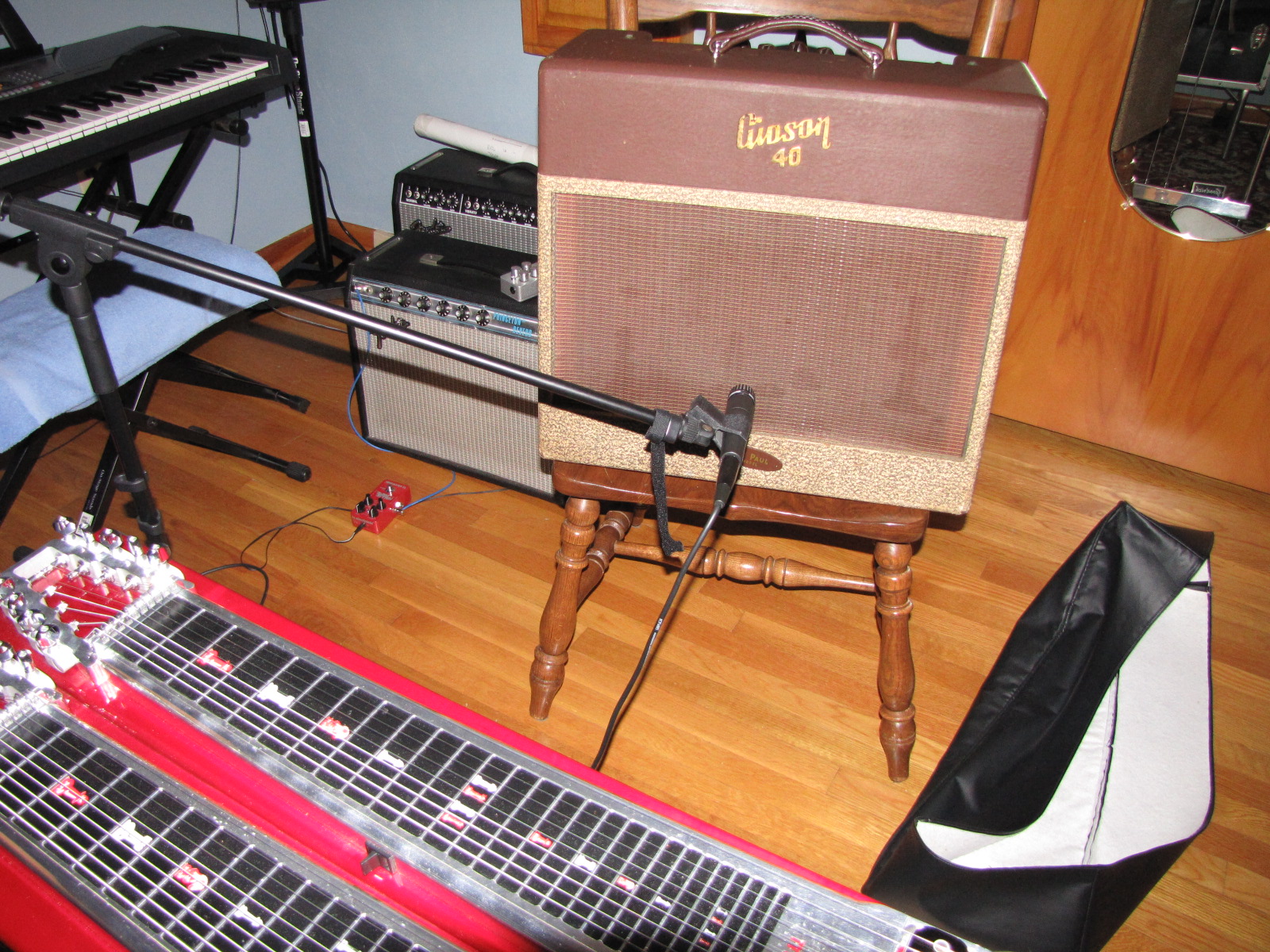
|
|
Click On The Pictures To View Full Size.
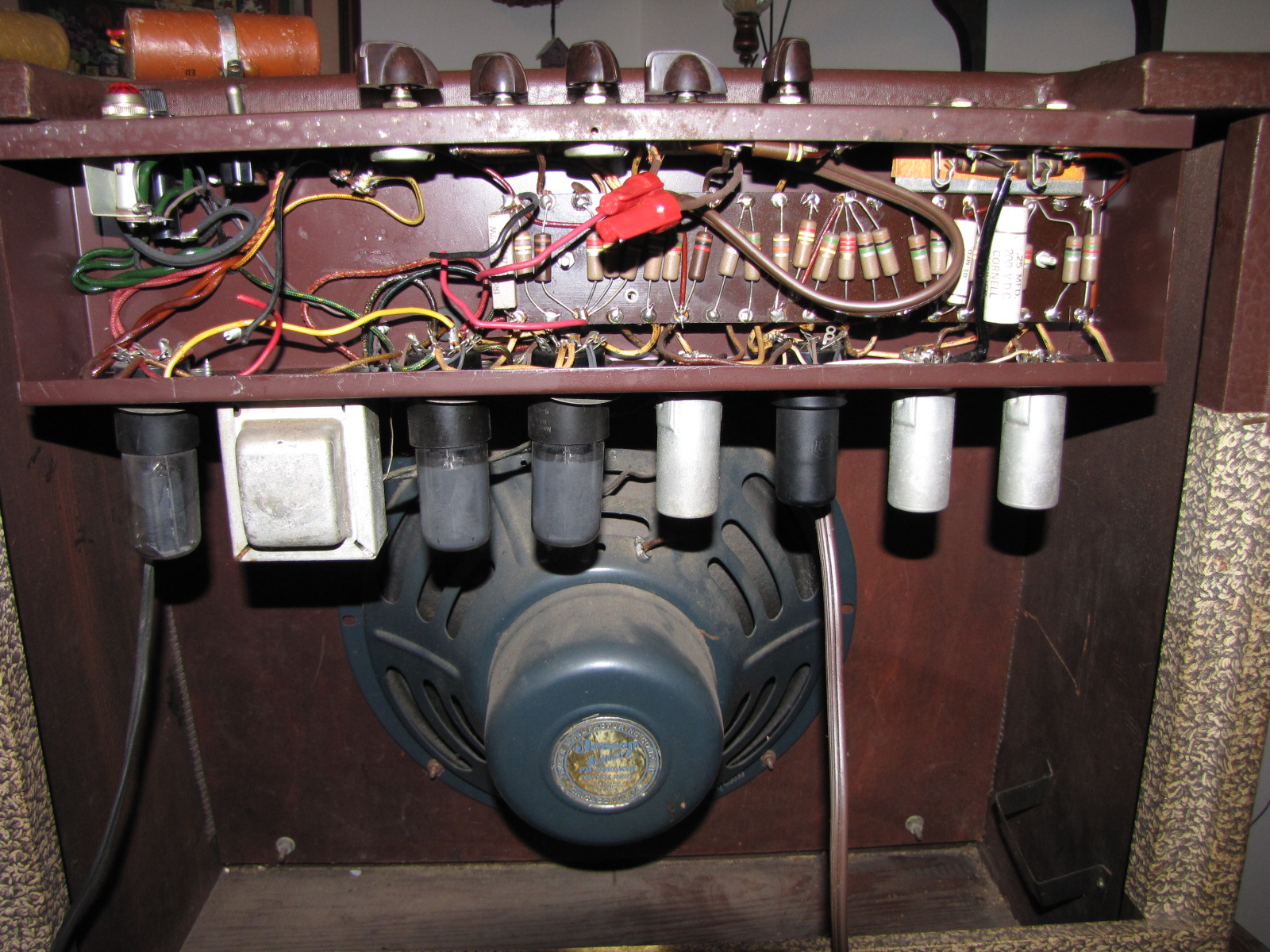
|
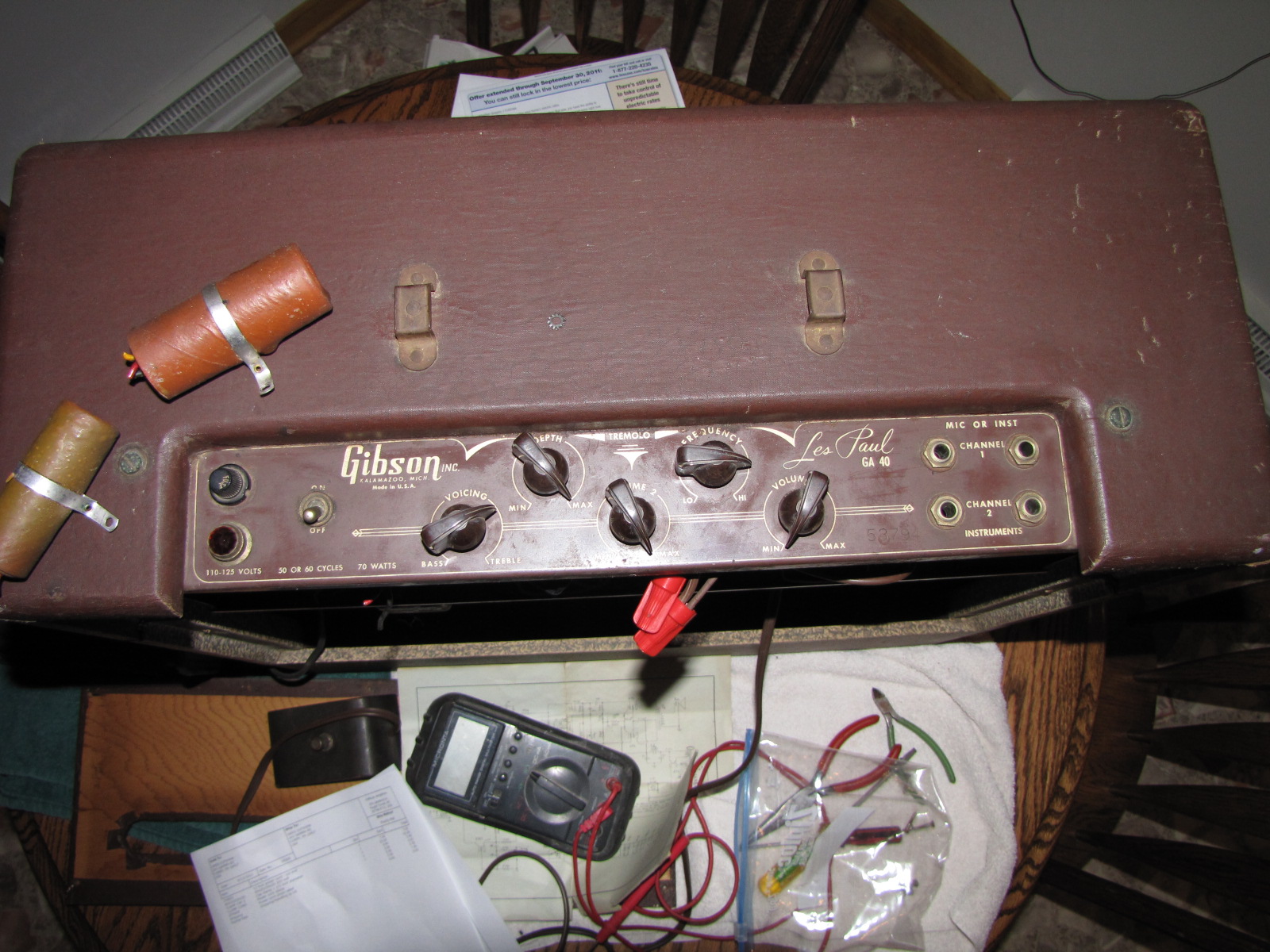
|
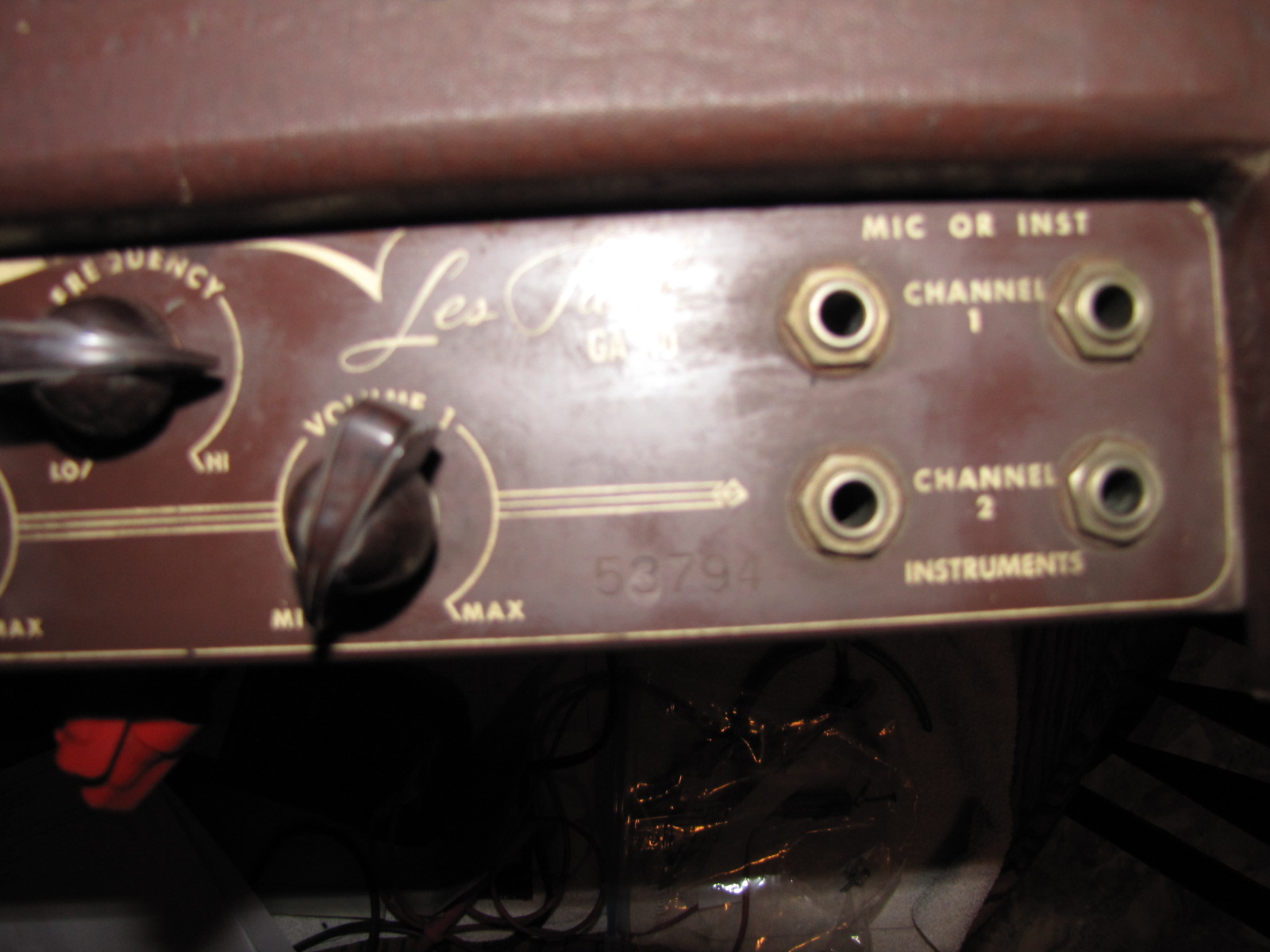
|
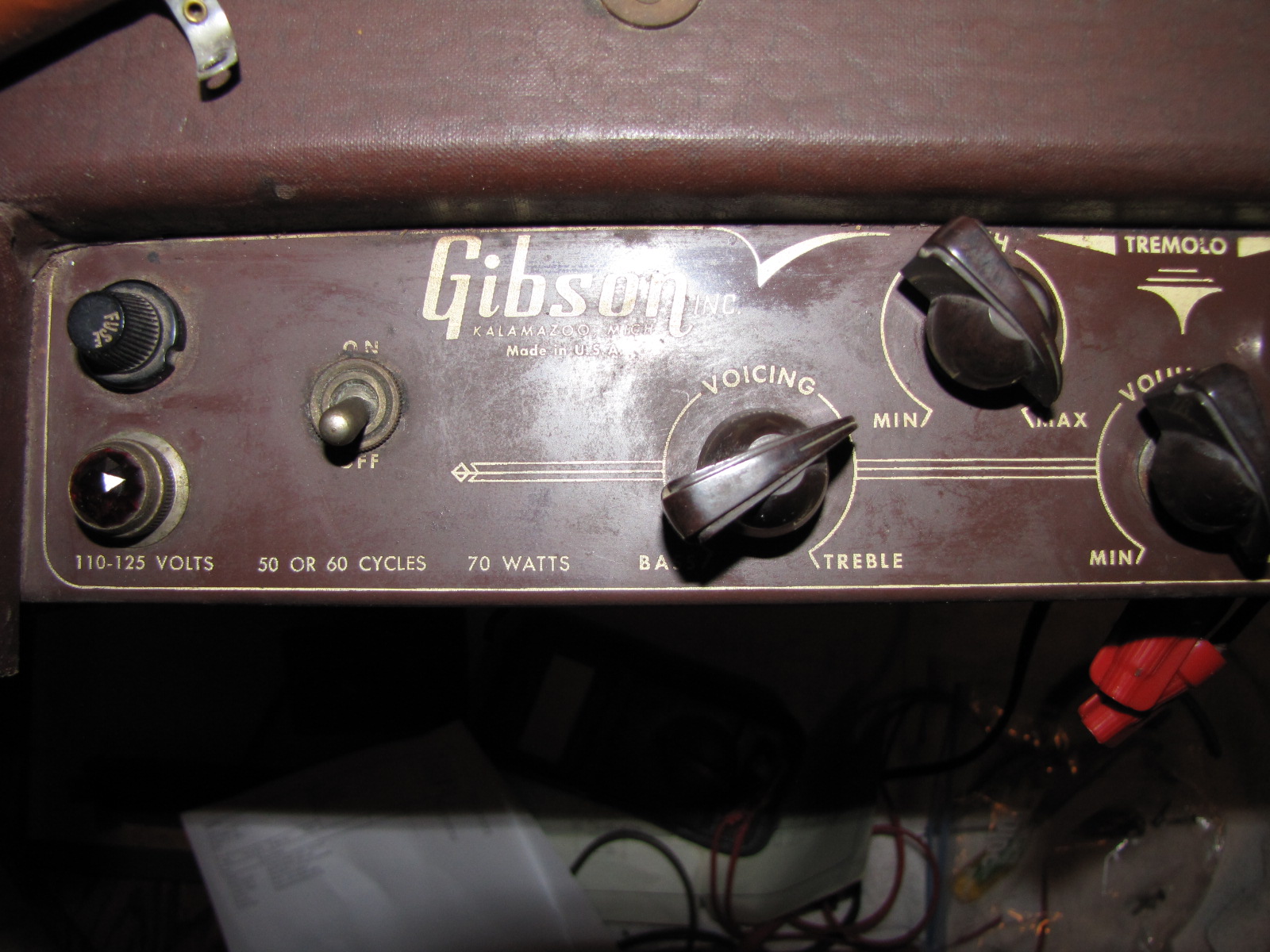
|
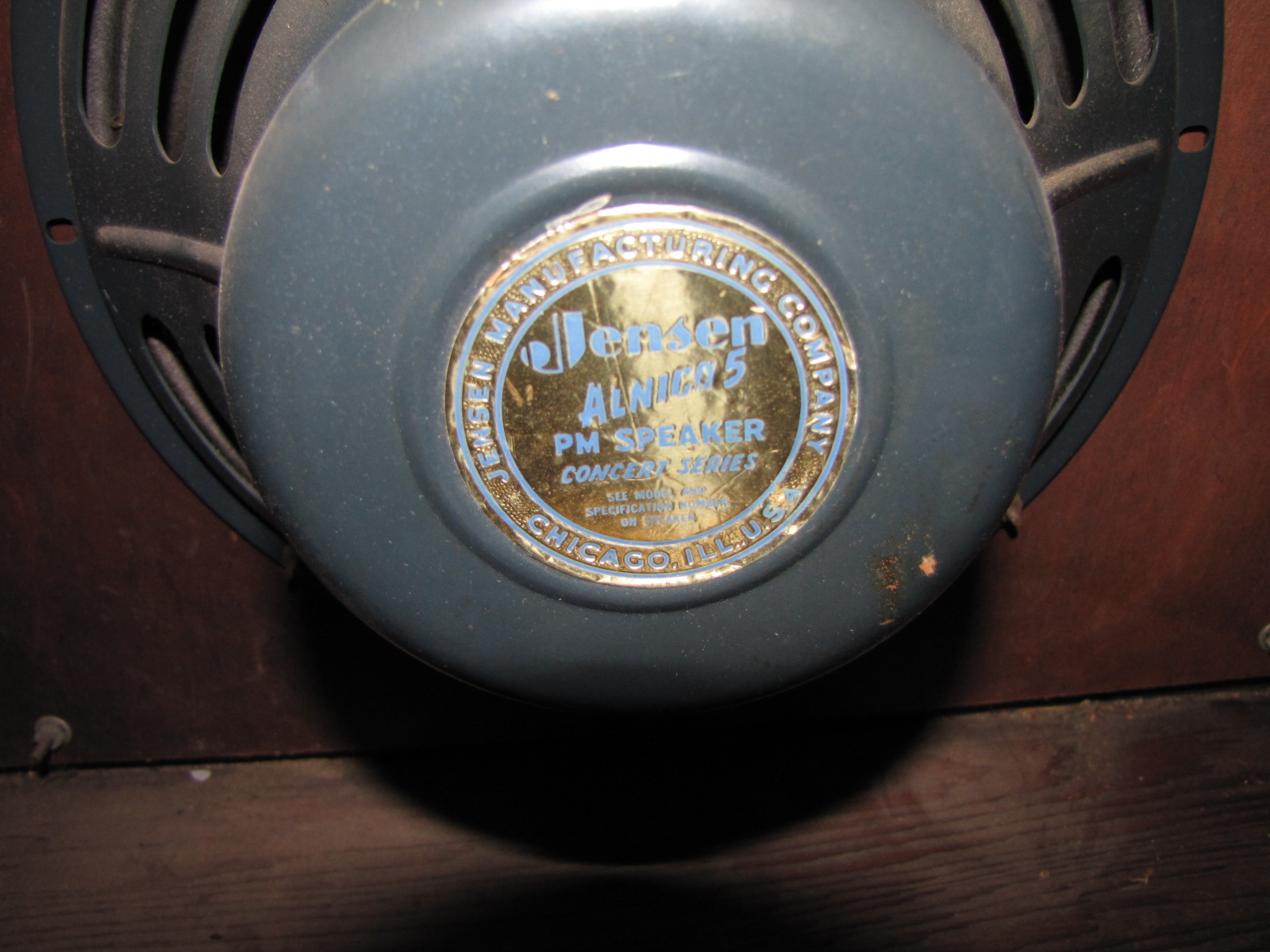
|
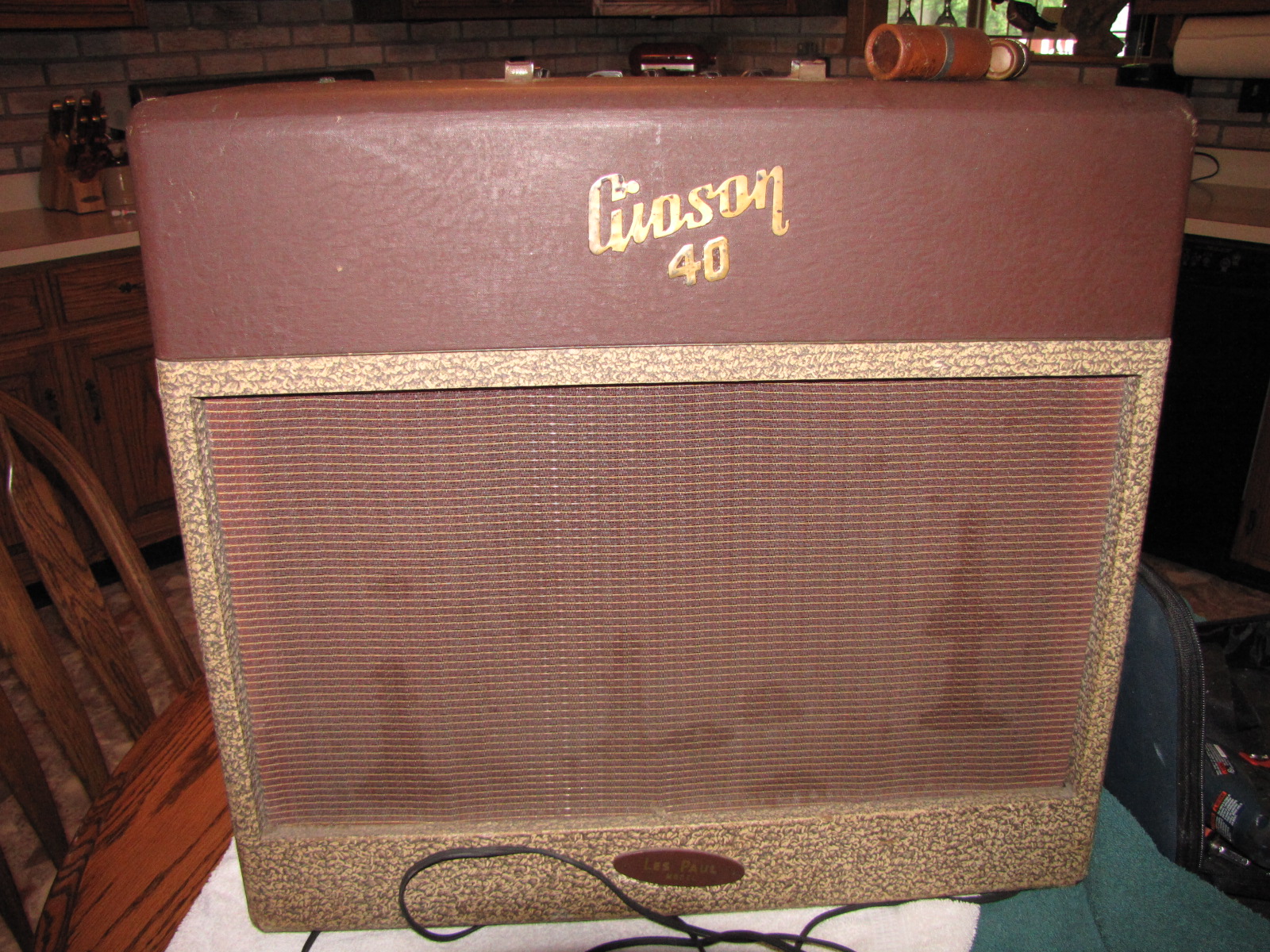
|
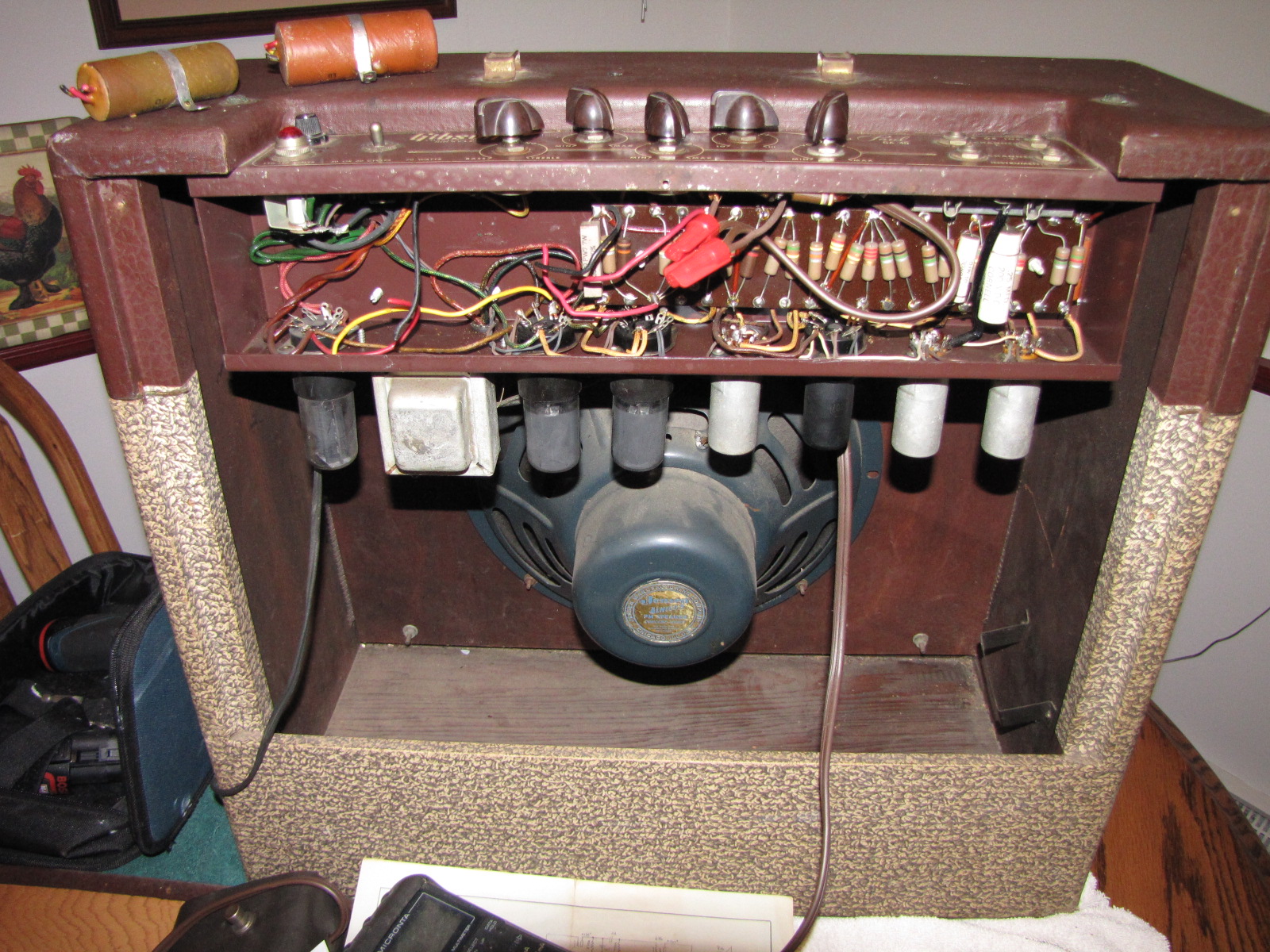
|
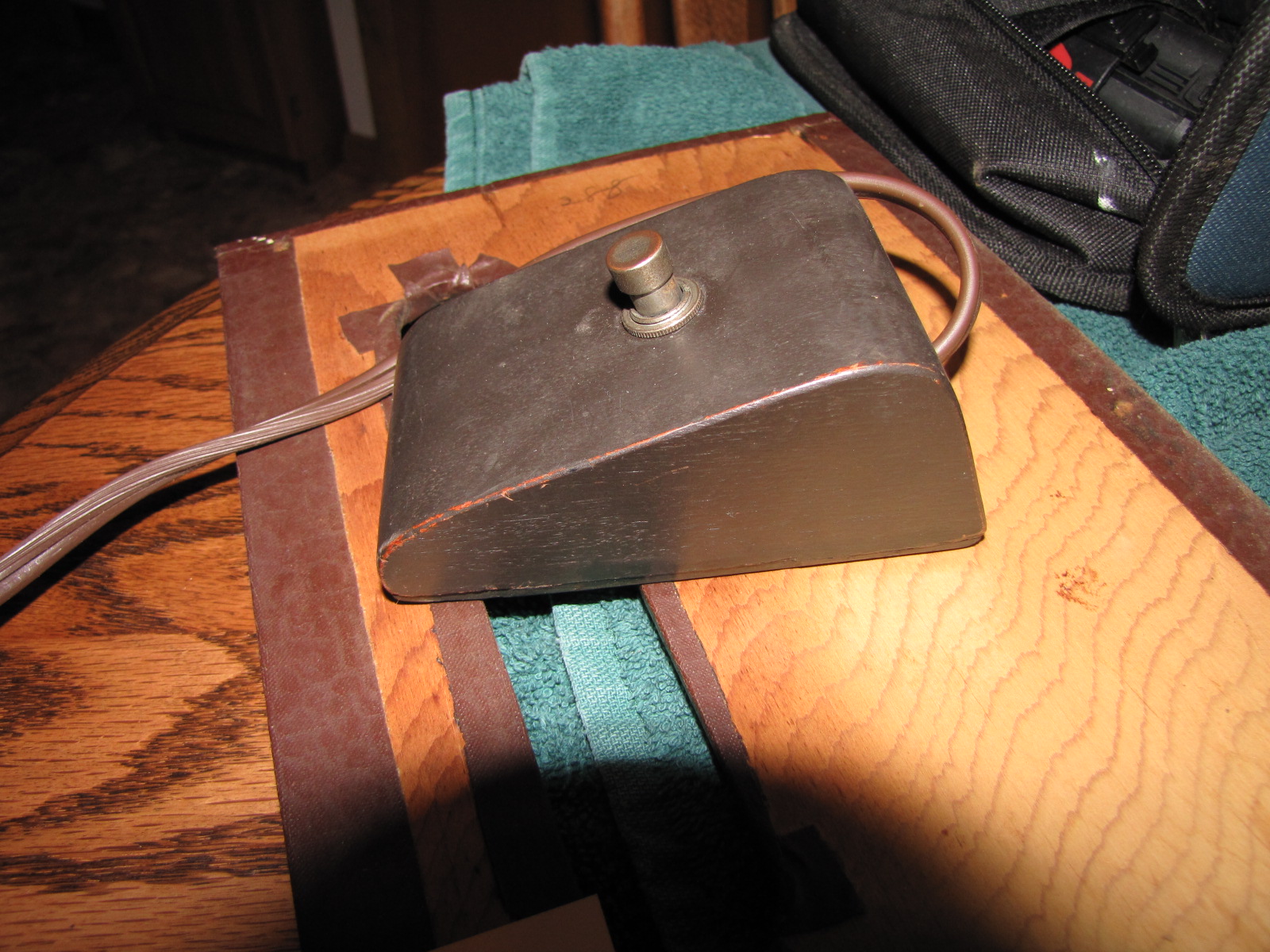
|
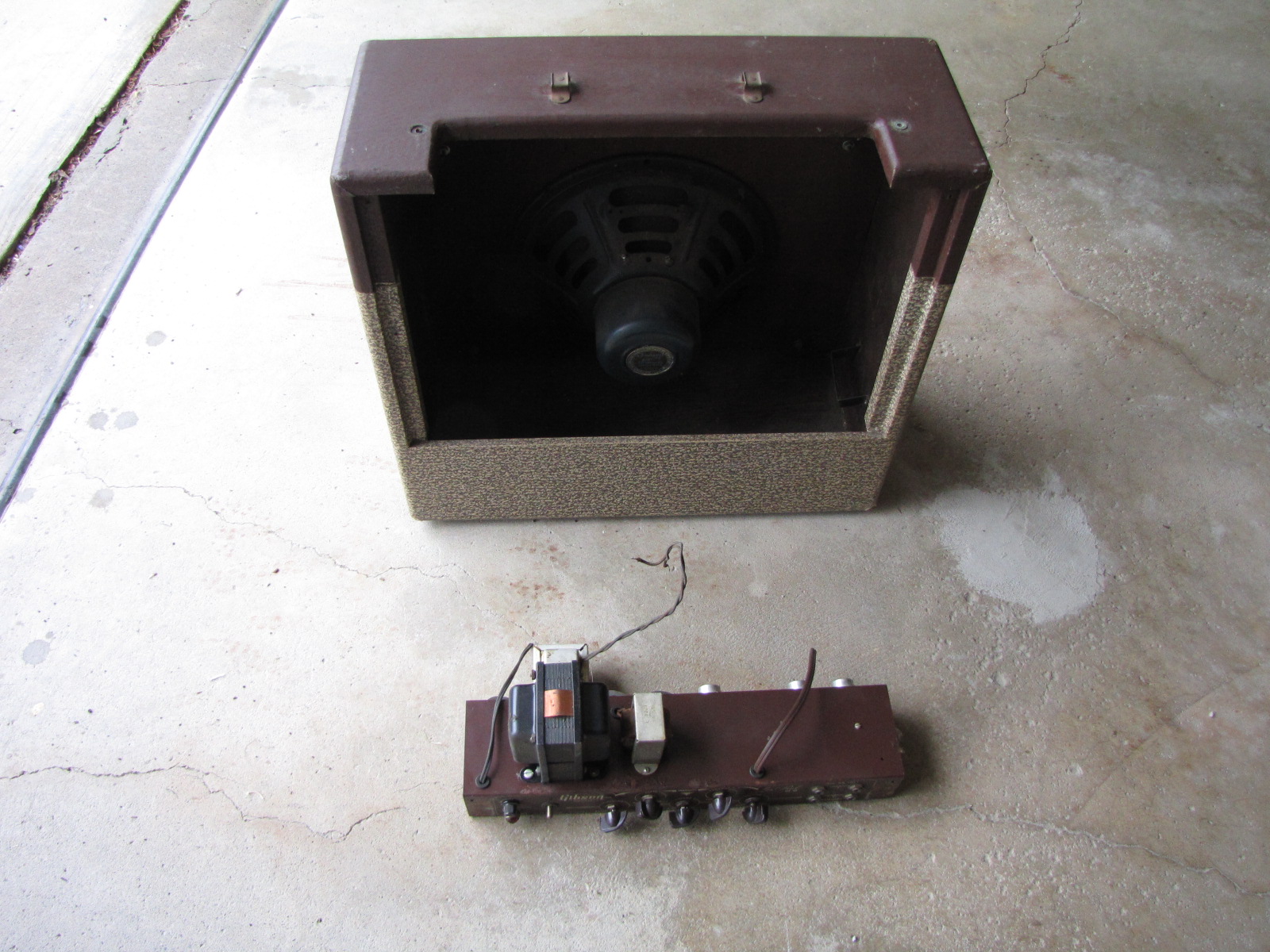
|
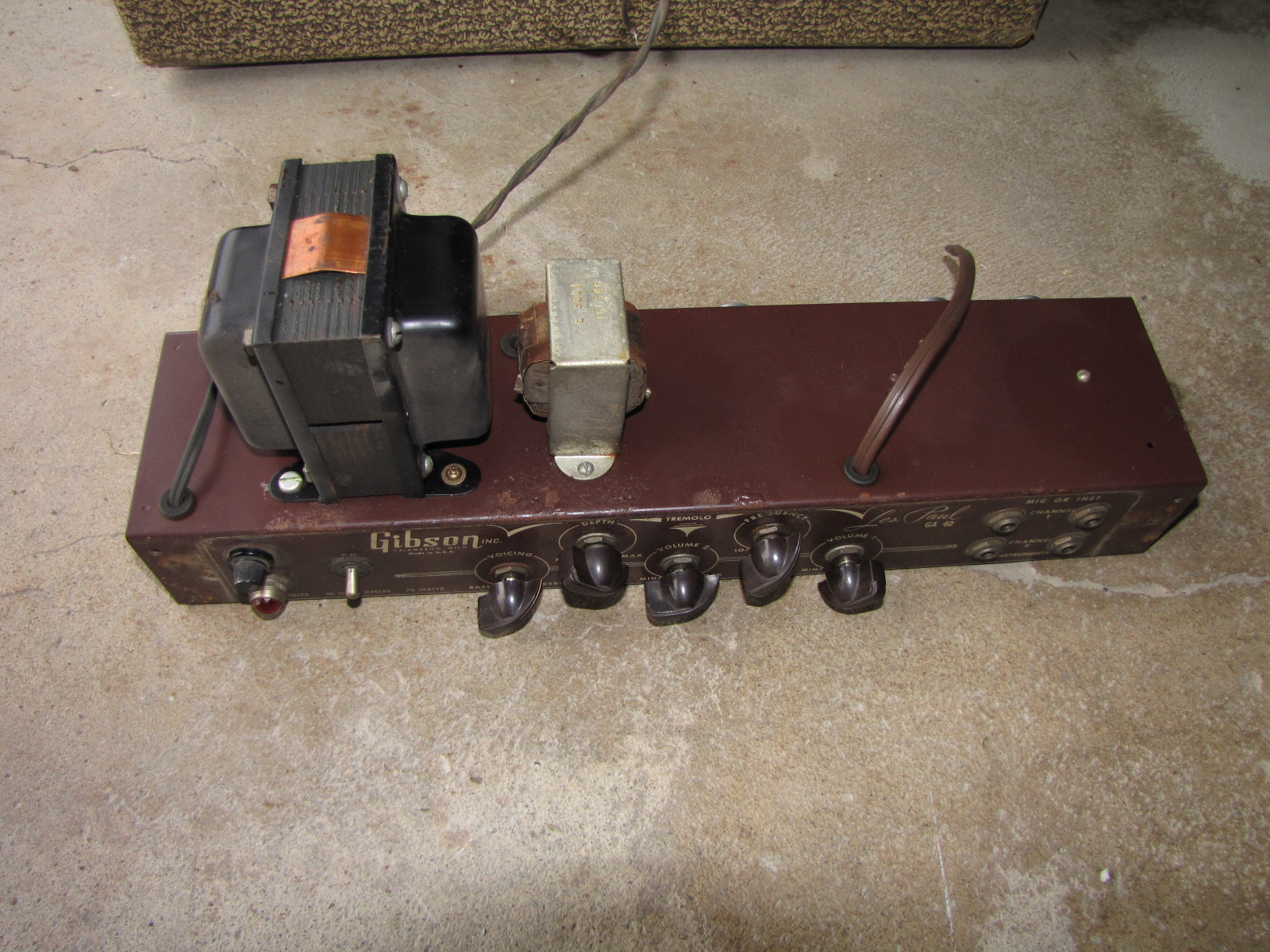
|
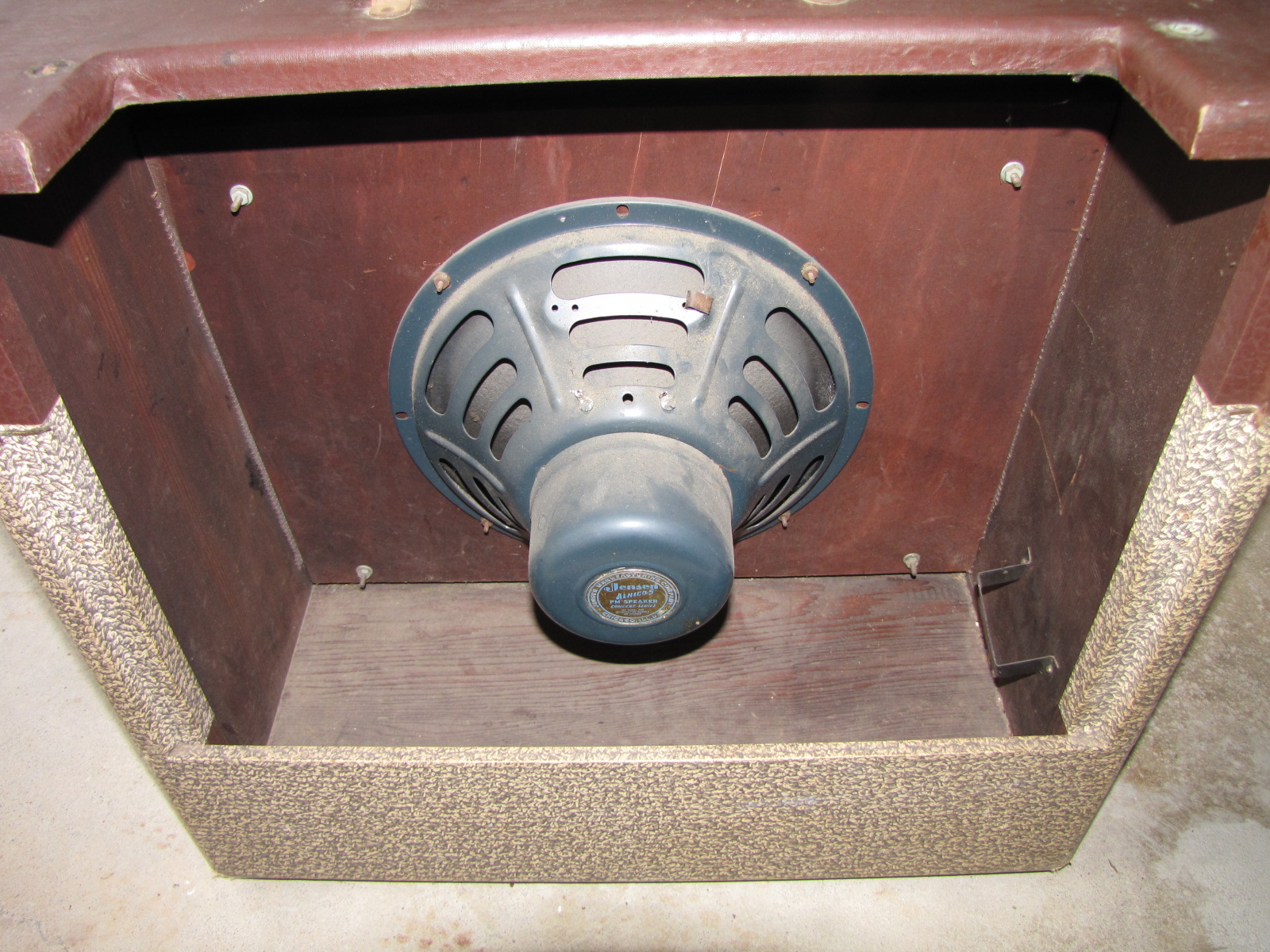
|
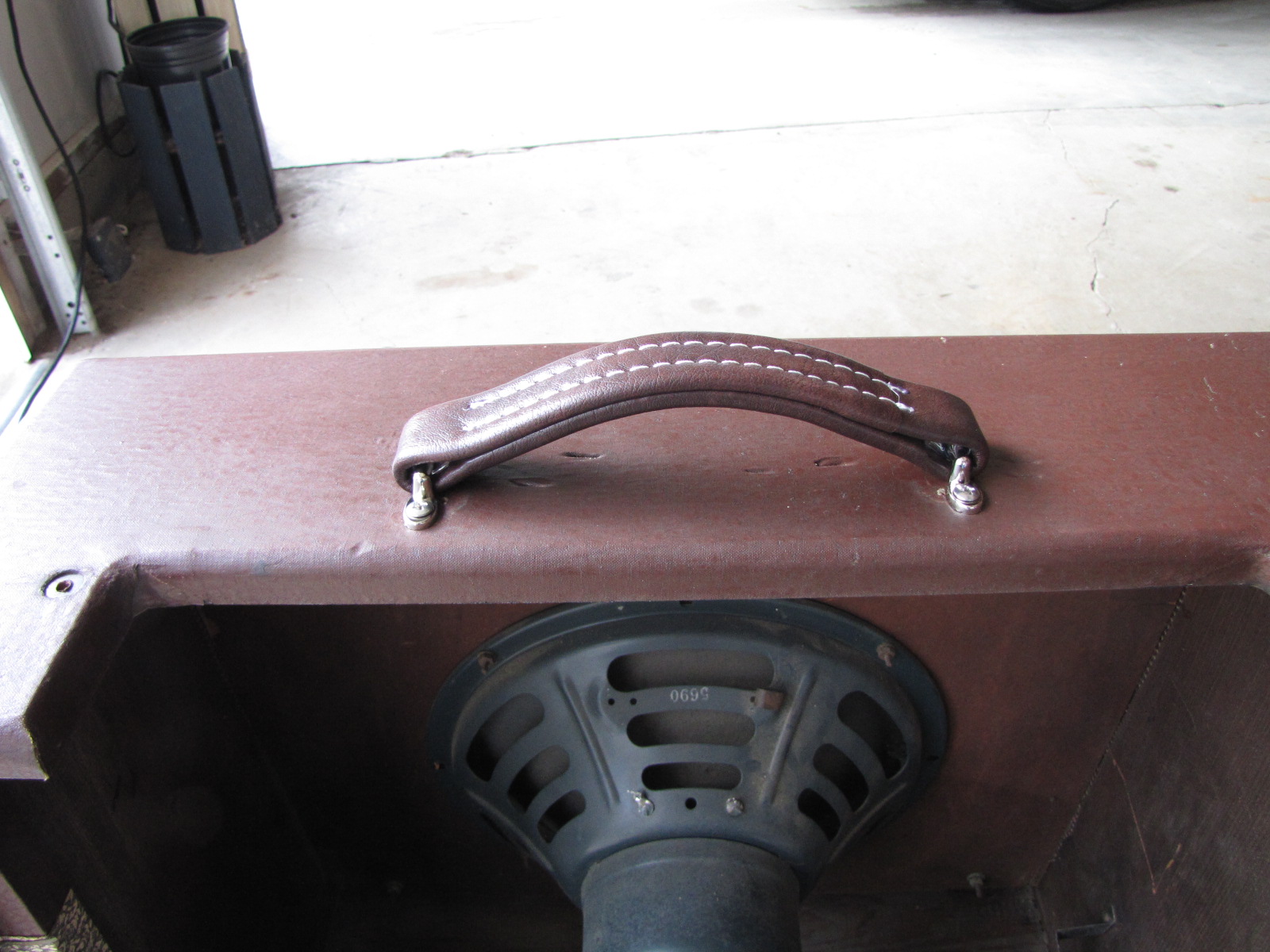
|
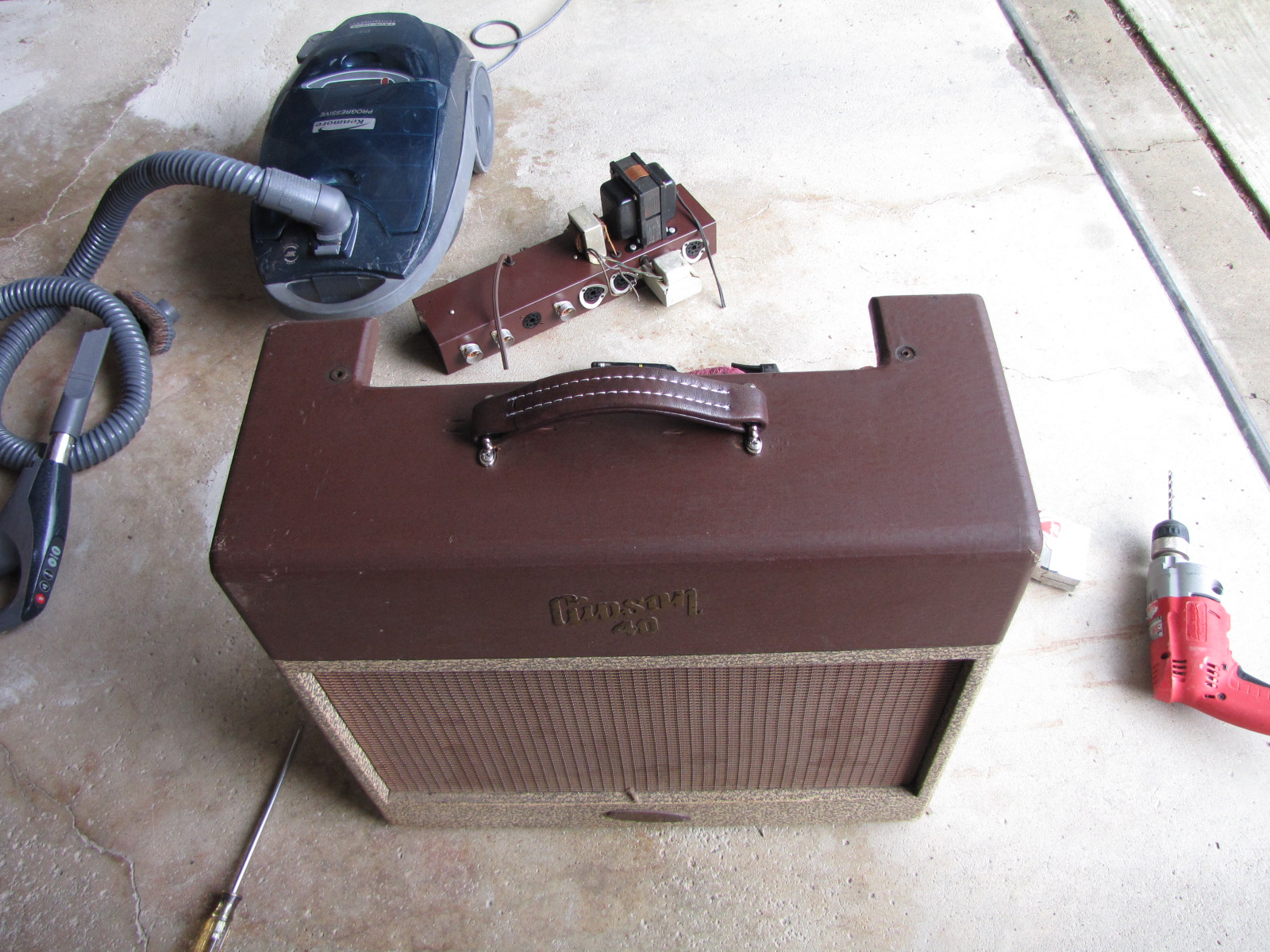
|
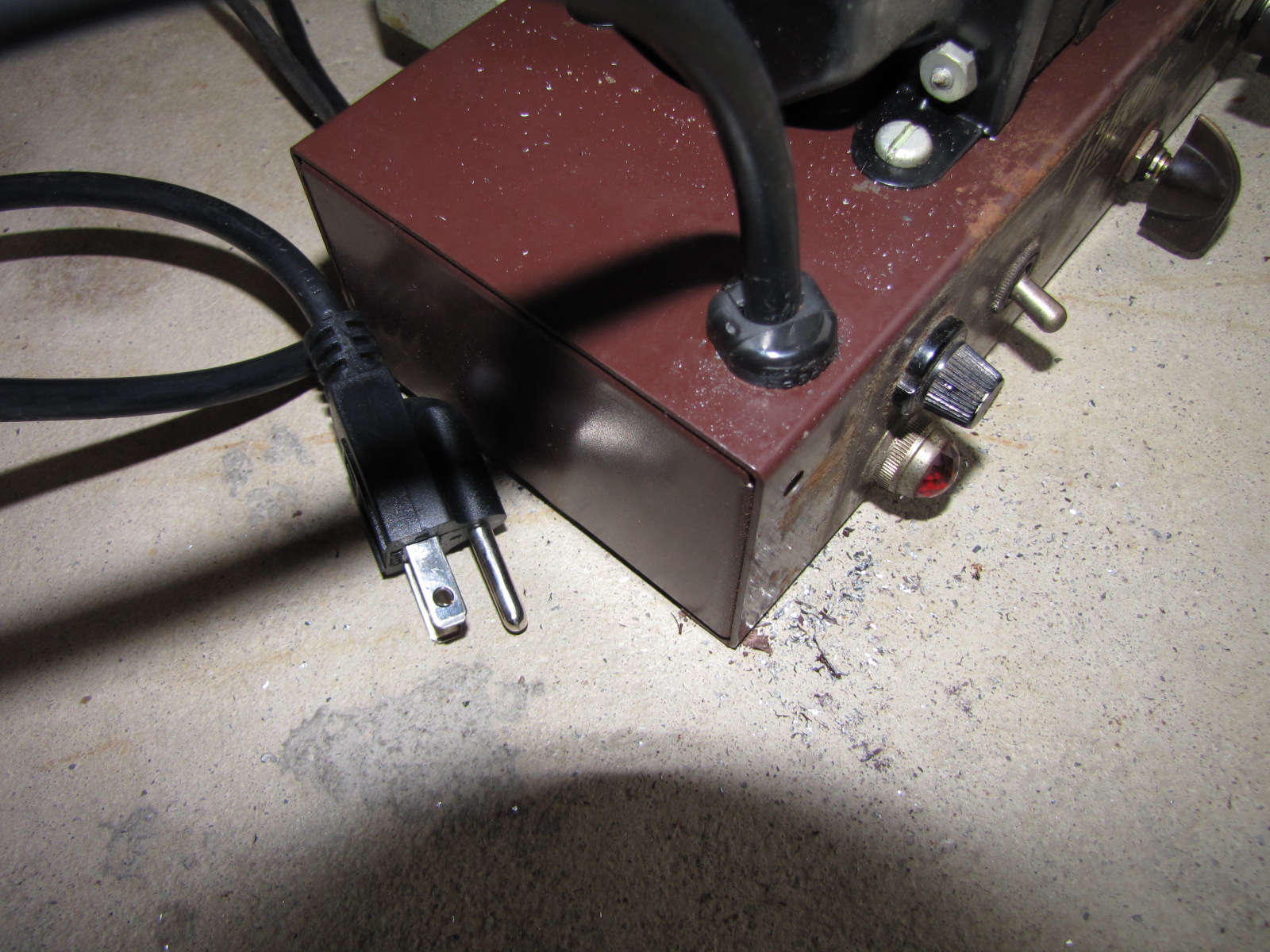
|
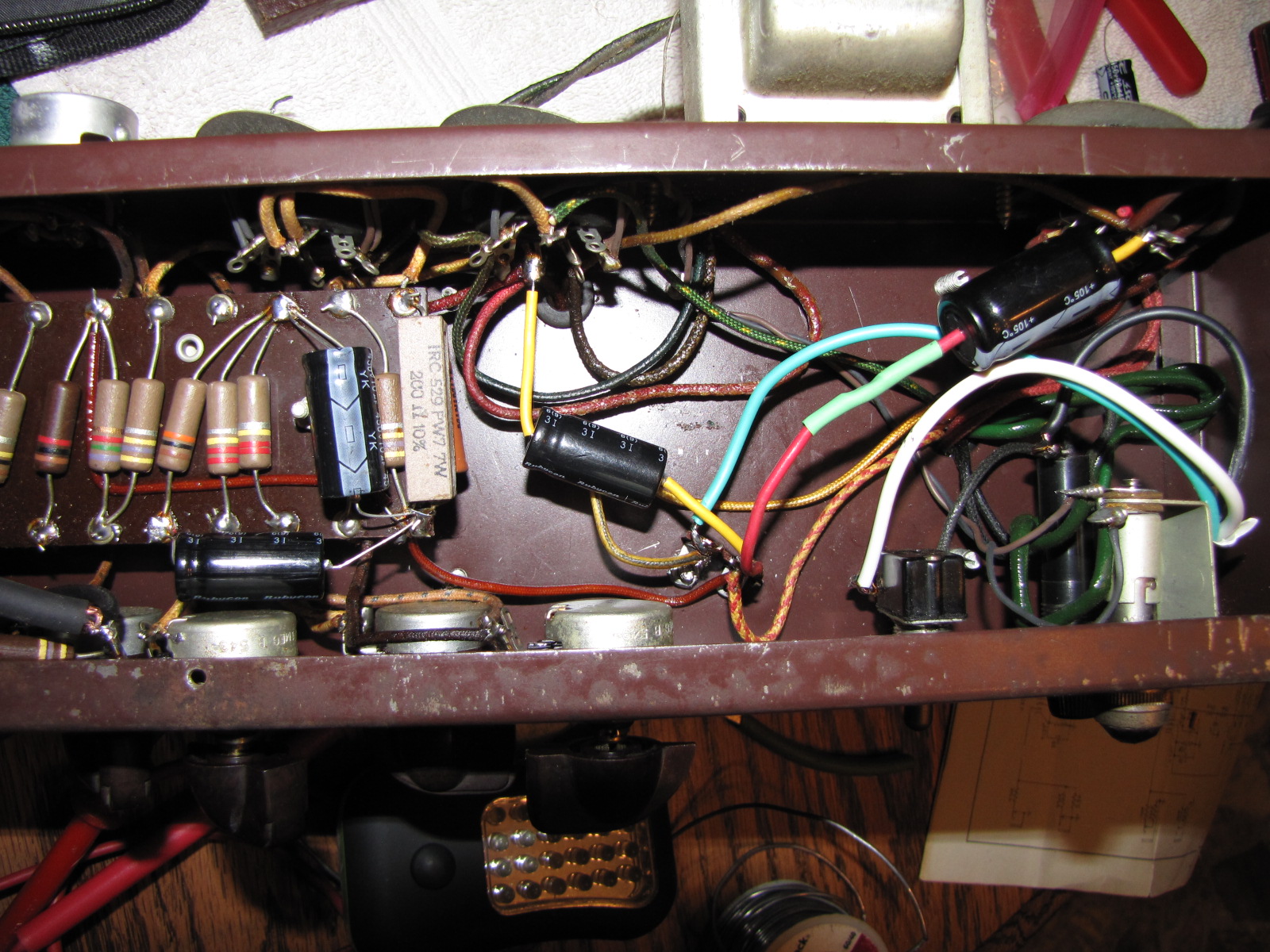
|
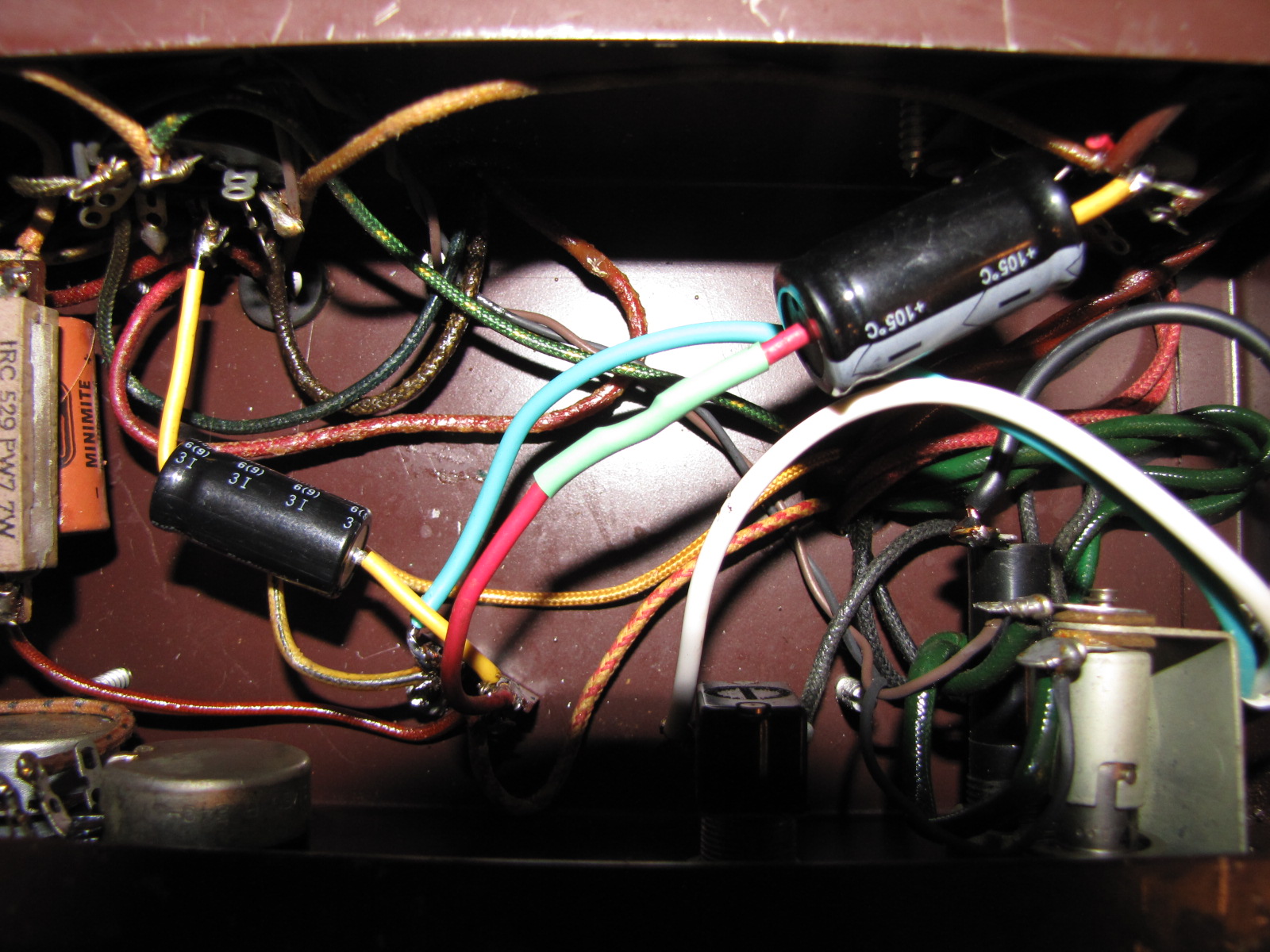
|
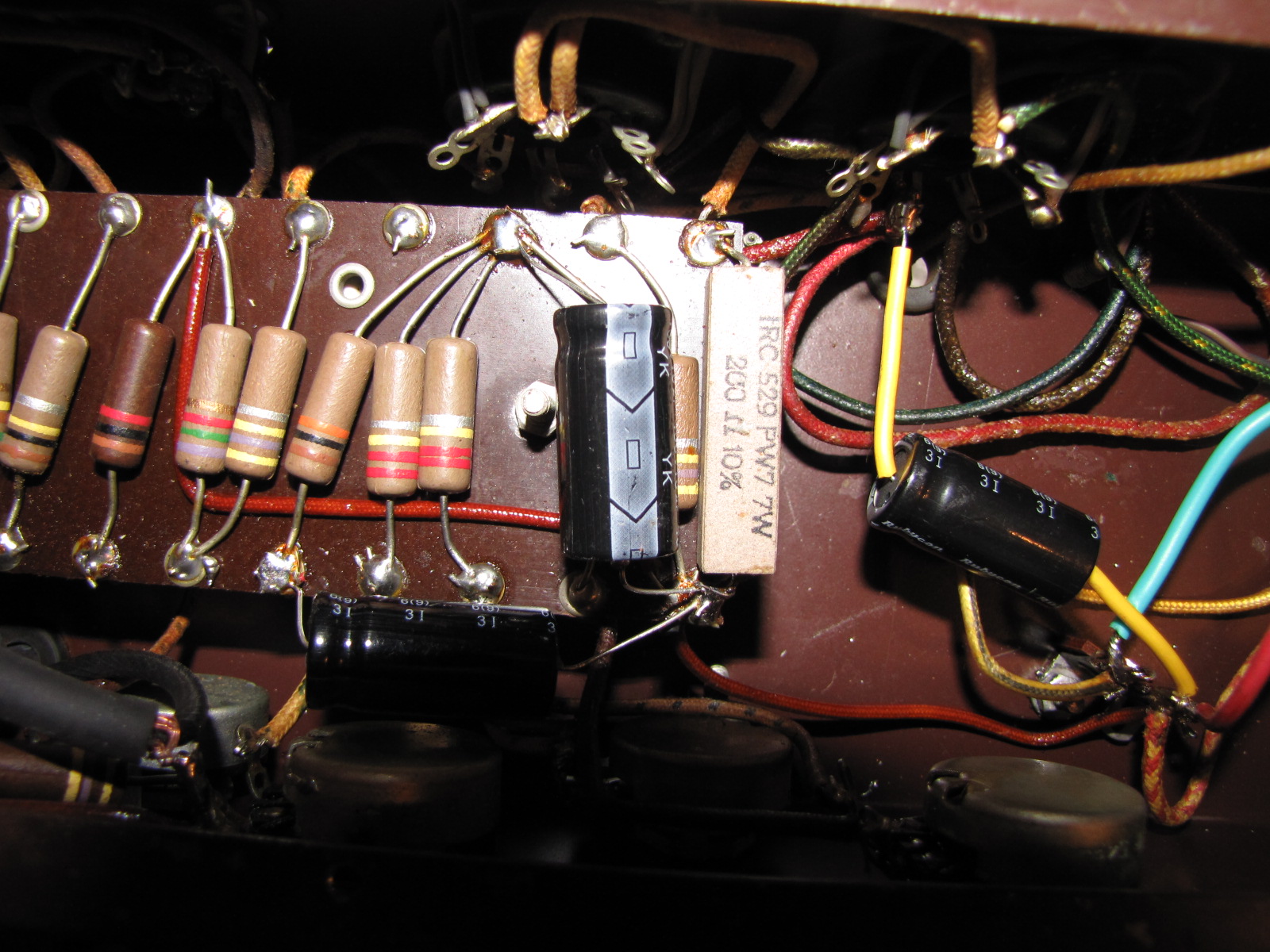
|
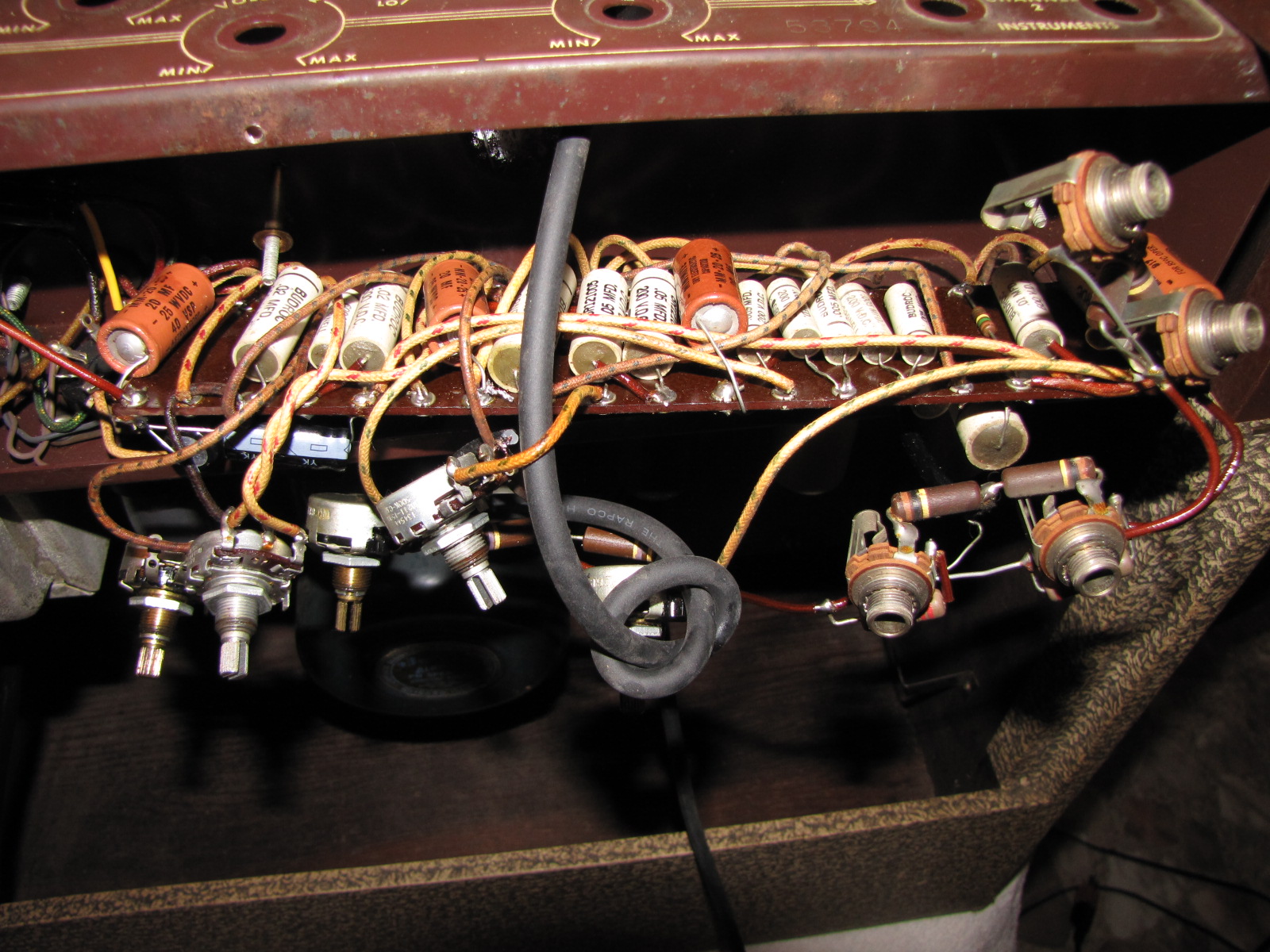
|
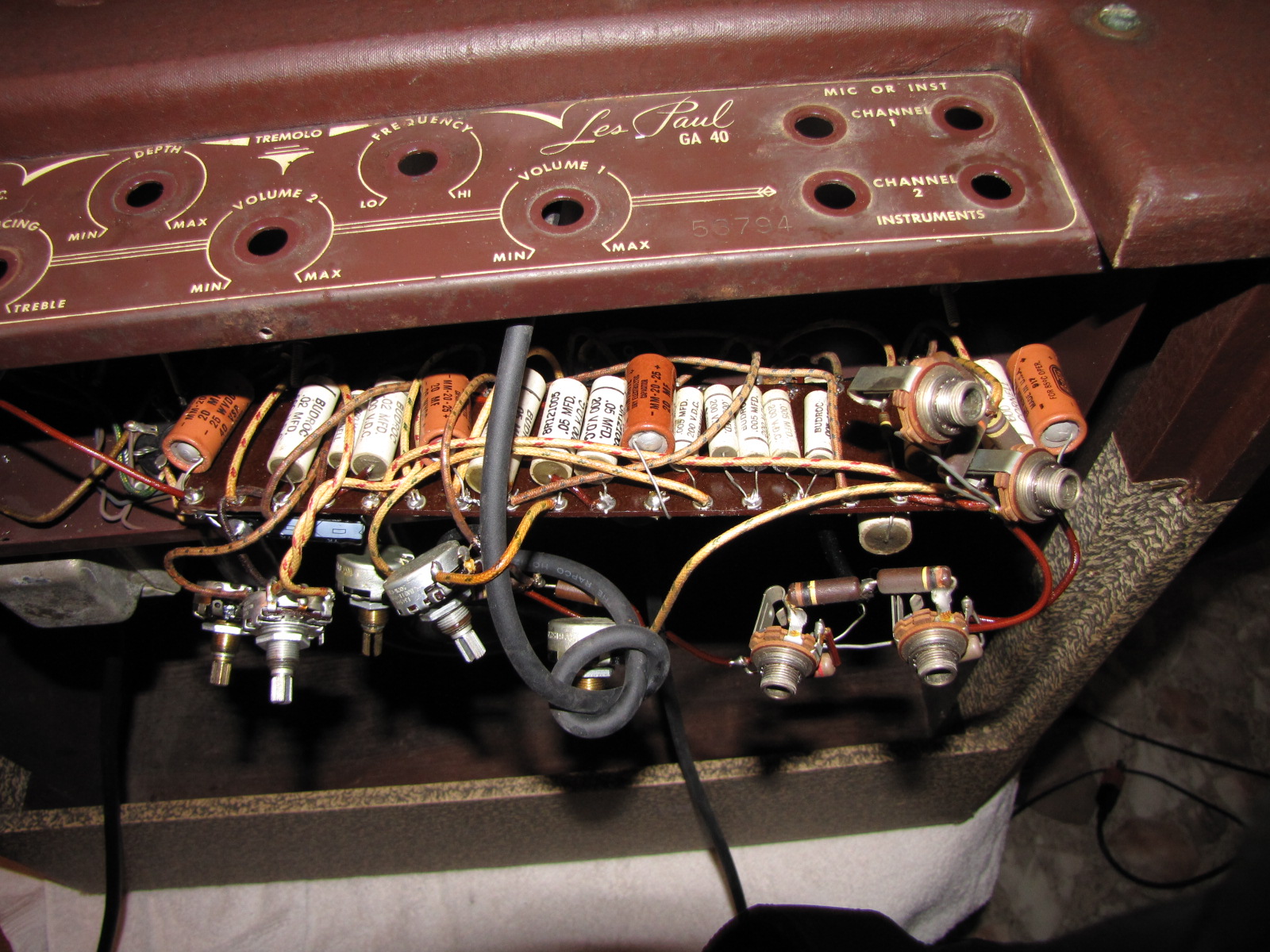
|
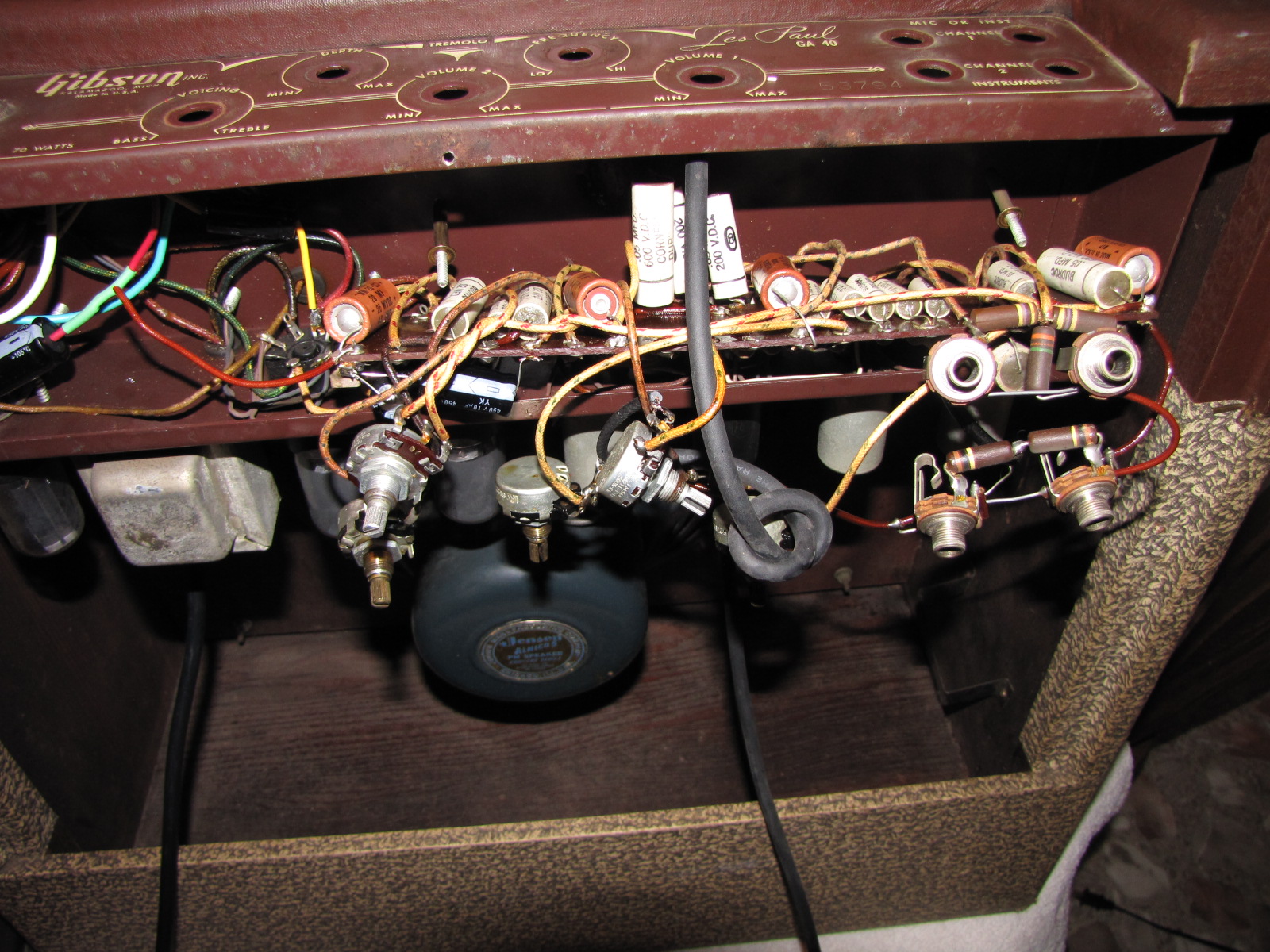
|
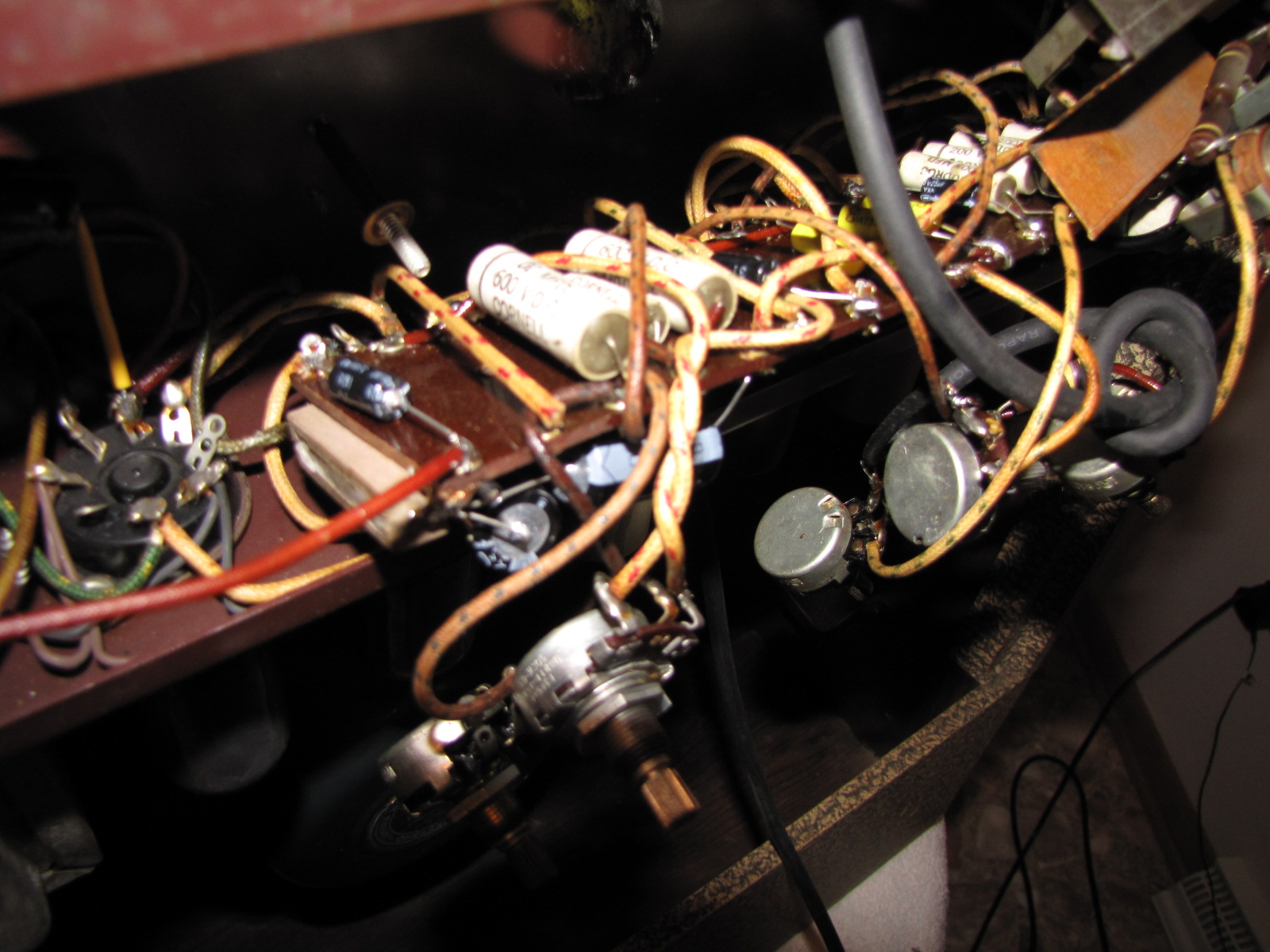
|
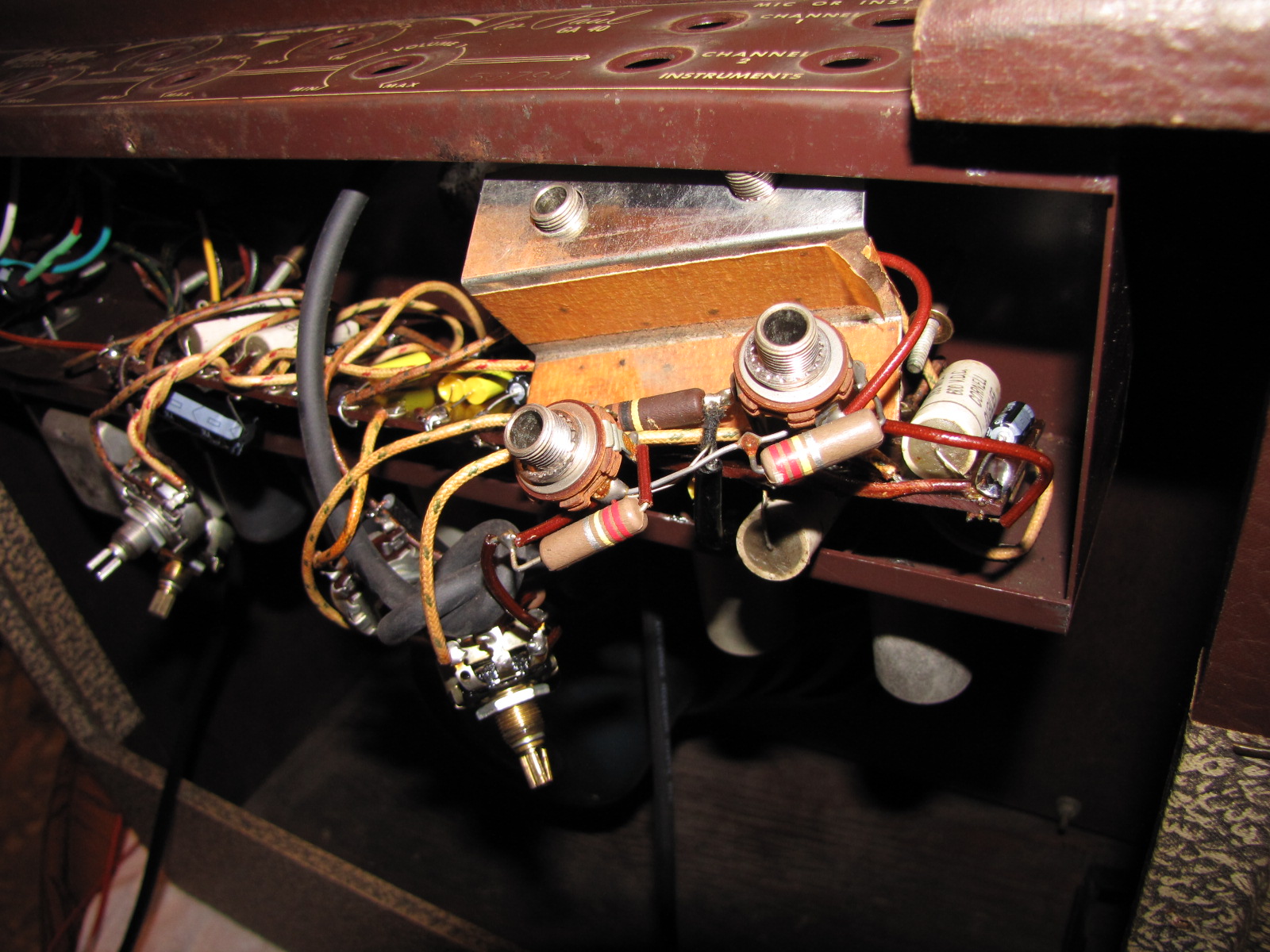
|
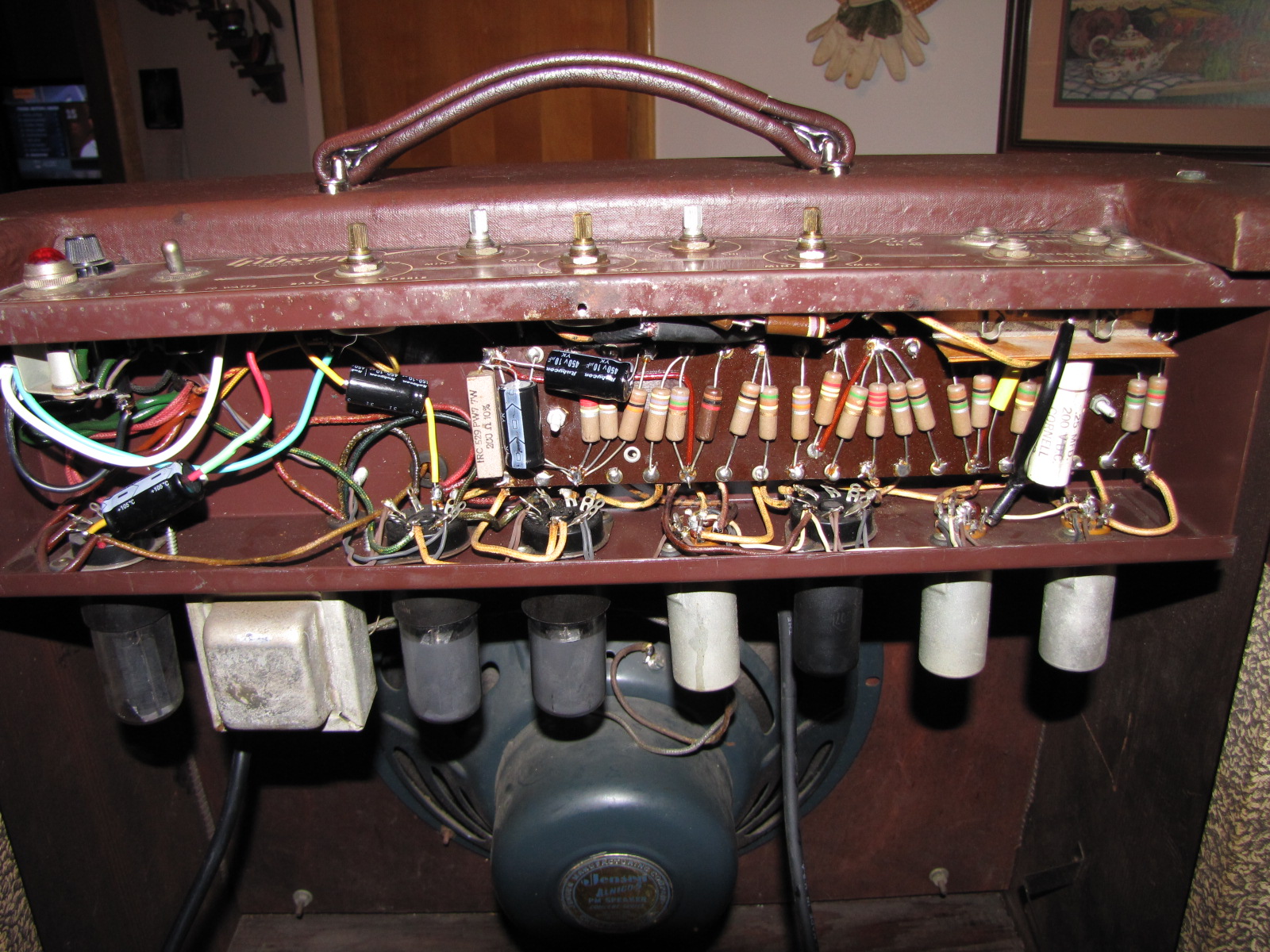
|
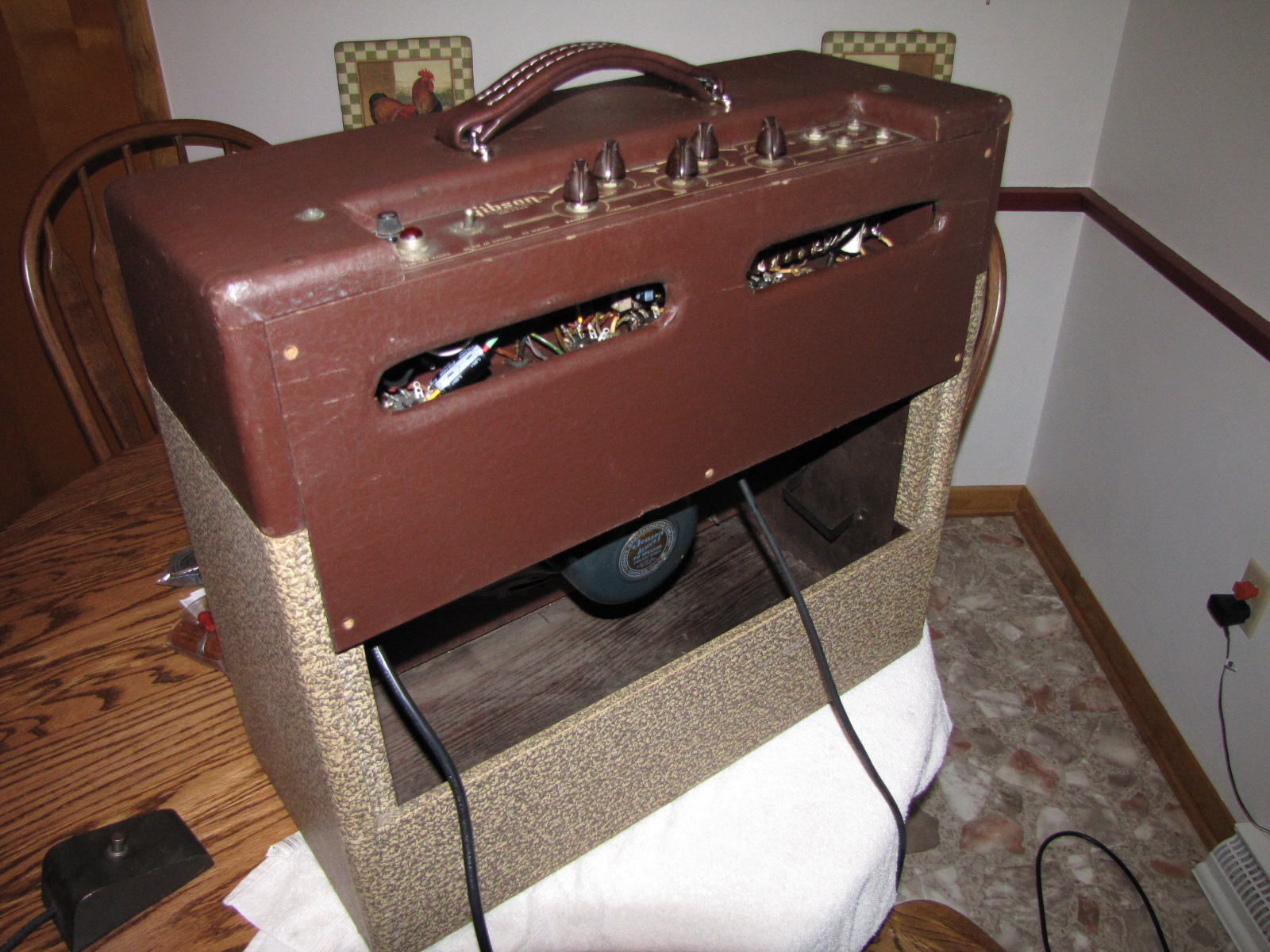
|
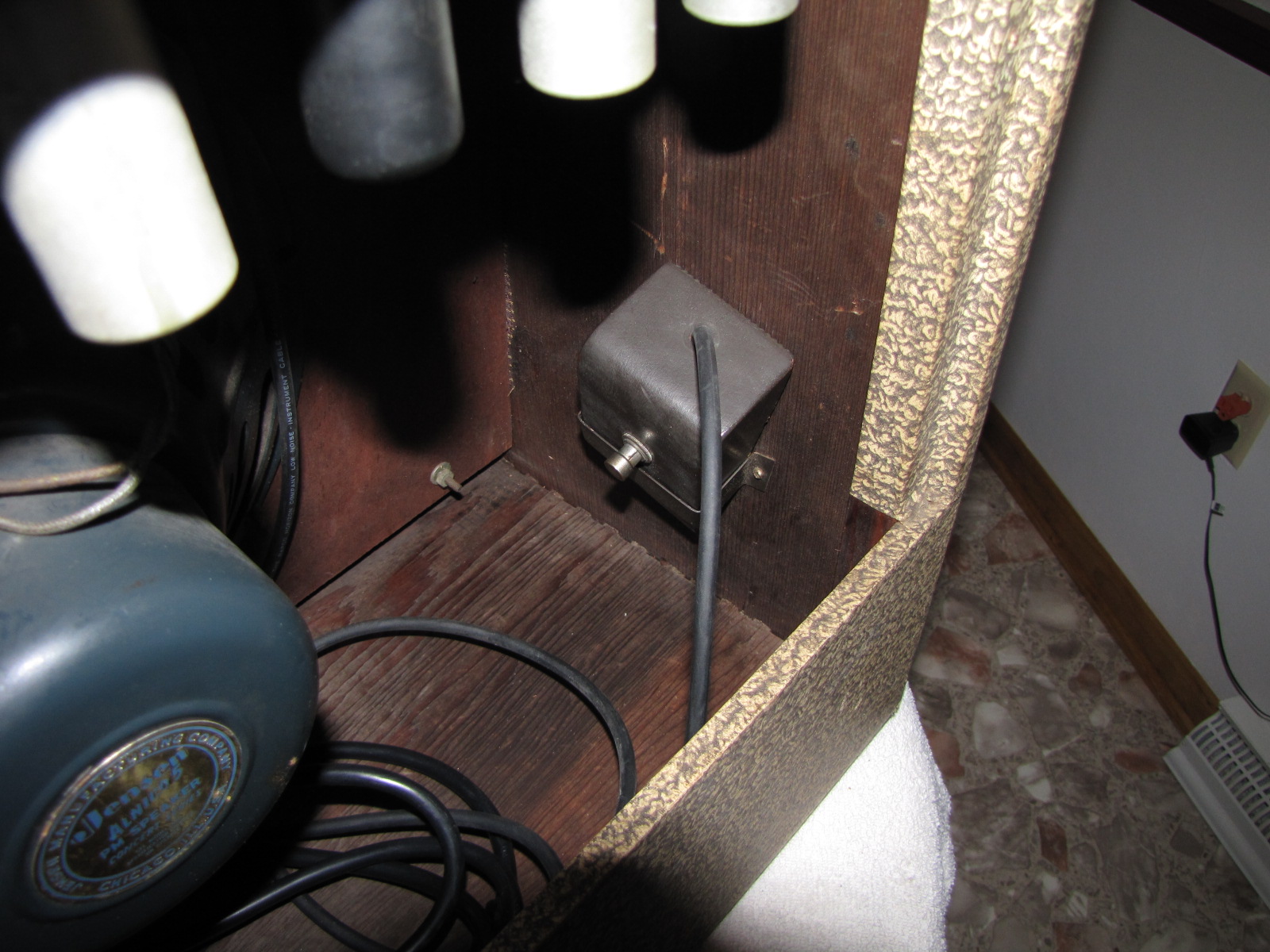
|